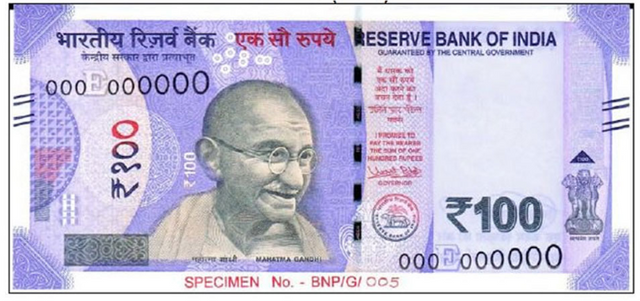How to Become Rich: 4 investment options to create wealth with less than Rs 500
When someone is committed to save and invest, the quantum of fund is not important as much as the intent to save and be responsible to one’s future is.

How to Become Rich: 4 investment options to create wealth with less than Rs 500
When someone is committed to save and invest, the quantum of fund is not important as much as the intent to save and be responsible to one’s future is. The amount that one is able to save depends on one’s stage of life and priorities. It’s good to develop a habit of saving and investing early in one’s life. With this, not only does one get used to the idea of saving but also he/she develops the necessary discipline of saving and planning for one’s future. The quantum or the amount that one is able to save can always vary, but there are ways in which one can start investing with as little as Rs 500 per month. Some of the investment options that one can avail are:
- Recurring Deposit with Banks
Recurring deposit with banks is considered as a safe investment and is well suited for conservative investors with small monthly savings. Investors can start with as low as Rs 100 a month, with a time period of one year to a maximum of 10 years. The return varies with banks and currently ranges between 6% and 7%. Though the return is guaranteed, it is not available for tax-deduction purpose. The interest income is taxed as per the applicable tax slab of the individual and the interest of more than Rs 10,000 attracts a TDS deduction of 10 per cent.
- 5-Year Post Office Recurring Deposit (RD)
Post Office RD is an attractive investment option for small and risk-averse investors who want to save regularly for the need of a lump sum amount after some years of investment. Post Office RD can be initiated for one year, two year, three year and five-year maturities. However, only the 5-year term deposit qualifies for the benefit of Section 80C of the Income Tax Act. Deposits in RD must be made at predetermined intervals, which may be monthly, quarterly, depending on the terms and conditions of the deposit scheme. It can be opened with a minimum of Rs 10 per month or any amount in multiples of Rs 5. There is no upper limit on the amount to invest each month. Though it’s fixed-term maturity, it may be closed before its maturity date. Investors are allowed one withdrawal of up to 50% of the account balance after one year of opening the account. Currently it offers an interest rate of 6.9 per cent per annum, which is compounded quarterly. A Rs 10 deposit in post office RD account fetches Rs 717.43 on maturity. The Post Office 5-year RD also comes under the tax exemption under Section 80C up to Rs 150,000 limit. The interest is chargeable to tax as per the tax slab and interest of more than Rs 10,000 per annum is applicable to TDS @ 10%.
- National Saving Certificates (NSC)
NSC is a fixed income investment scheme, available in post offices. It is a safe investment option with a host of benefits, available in denominations starting from a low of Rs 100 to as high as Rs 10,000. These instruments come with the option of two maturity periods of 5 years and 10 years. There is no maximum cap on investing in NSCs, but investments of up to Rs 1.5 lakh in the scheme is allowed for tax deduction under Section 80C of the Income Tax Act. The fixed interest rate on this product is compounded annually and the current rate is 7.6%. However, the total investment with interest is only payable at maturity.
- National Pension System (NPS)
The National Pension System (NPS), regulated by the Pension Fund Regulatory and Development Authority (PFRDA), is a long-term retirement-focused investment product now available to all Indian citizens. NPS is a market-linked product and, therefore, offers returns based on the fund performance. The NPS fund corpus is invested in a mix of various market products such as equity, fixed deposits, bonds, liquid and government funds and an investor has the right to choose how much money can be invested in equities through NPS based on his risk appetite. The new pension scheme has two tiers, named as Tier-I and Tier-II accounts. While a subscriber cannot withdraw from the Tier-I account, which is primarily structured for retirement savings, he or she can avail of NPS tax benefits in Tier-II accounts. The minimum annual (April-March) contribution for an NPS Tier-1 account to remain active has been reduced from Rs 6,000 to Rs 1,000. Currently, the 1, 3, and 5-year market return for Fund option E is around 9.5 per cent, 8.5 per cent, and 11 per cent, respectively. NPS has the benefit of total tax deduction up to Rs 2 lakh, allowed in the scheme under Section 80C and 80CCD of the IT Act, 1961.
Return Calculation in Different Options
Investment Avenues
Interest
Lock-in Period
Risk Profile
Typical Return for Monthly Investment of Rs 500 for 5 years (total investment of Rs 30,000)
Tax-Saving Instrument
NSC
7.6%
5 years
Low-risk
Rs.36,[email protected]% PA
NPS
8% to 10%
Till retirement
Market-related risks
Rs.36,707 @8% PA
Post Office 5-Year RD
6.9%
5 years
Low-risk
Rs.35,872 @6.9% PA
Non-Tax Saving Instrument
Bank RD
6% to 7%
1 to 10 years
Low-risk
Rs.34,912 @6% PA
Apart from these schemes, there are some other saving and investment options like PPF and mutual funds which allow investors to save with as little as Rs 500 or even with less than that. So, it is wrong to assume that one needs a big amount to save and invest.